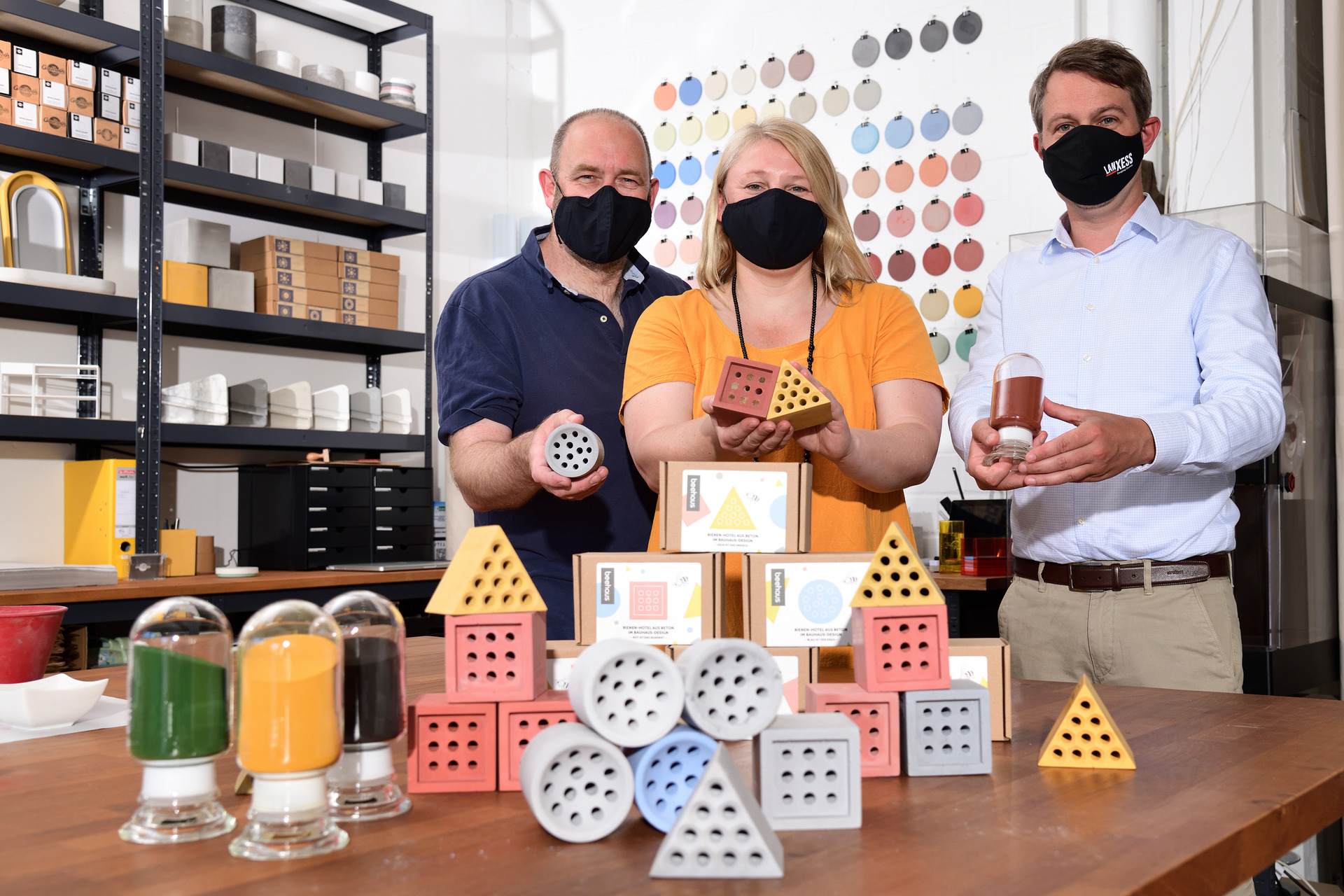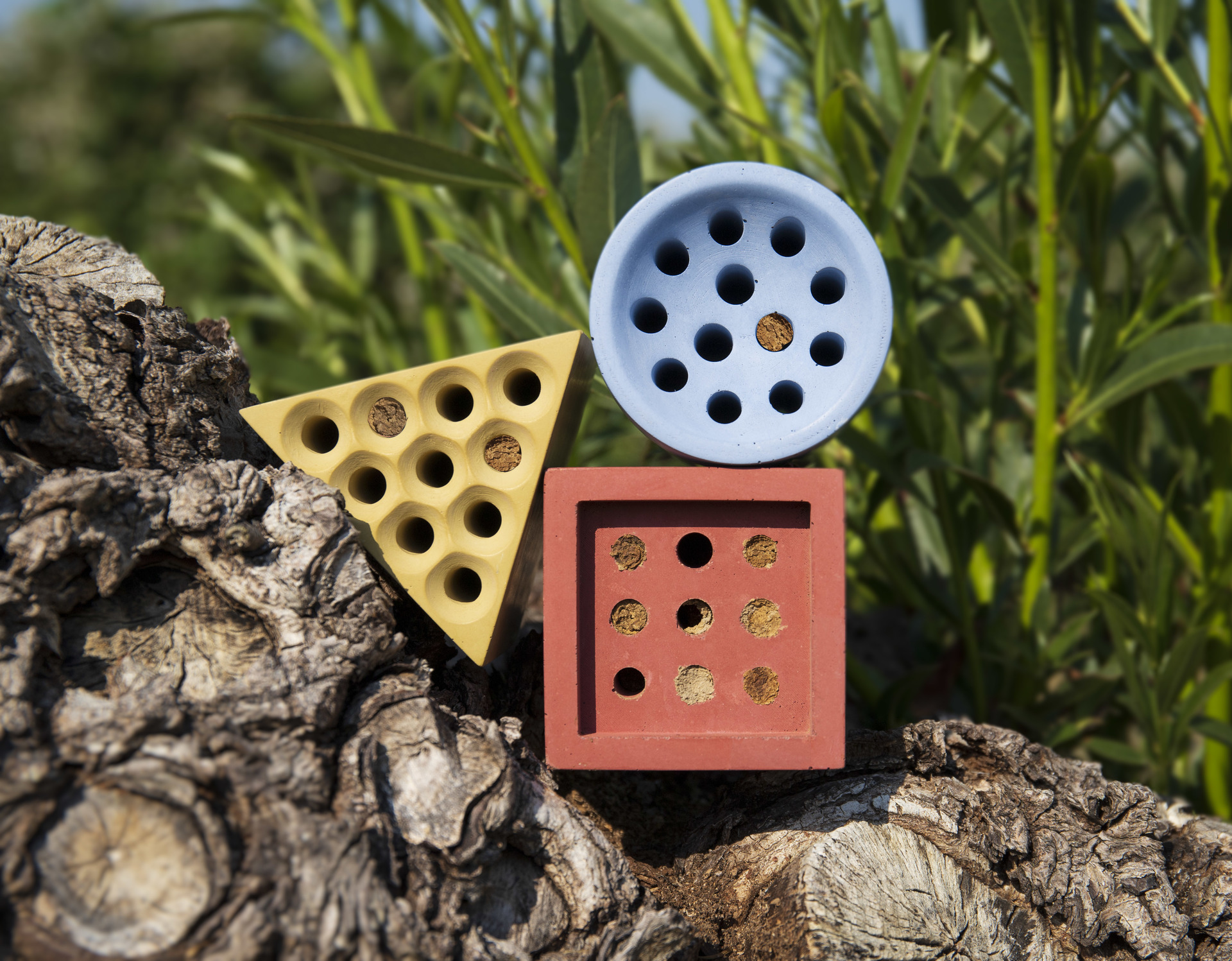Wild bees love red pigments
The nesting aids are made of self-compacting concrete, with edge lengths of around seven centimeters each, and are available as a red cube, a blue cylinder and a yellow pyramid. Weather-stable inorganic pigments from LANXESS ensure long-lasting color. According to Diana Schmidt-Rothmeier, Managing Director of Grellroth, wild bees particularly like the red variant, which is colored with the pigment Bayferrox® 130 – “The red hotels are always the first to be filled,” says the graduate designer.
Small works of art
Grellroth employs craftsmen, technicians and designers who conceptualize and design furniture and objects made of concrete and manufacture them as one-off items or in small-scale series. When it comes to the beehaus, the concrete manufacturer places particular emphasis on sustainability. Fragments and leftovers from the production of larger components are mixed with high-quality white cement, easily dispersible pigments and concrete additives and poured into specially created molds to create durable bee houses – all by hand.
“Developing and manufacturing the polyurethane molds for this purpose was a challenge in itself, because the necessary draft angles in the narrow tubes require a certain expertise,” explains Schmidt-Rothmeier, who previously worked for the automotive industry for several years and now contributes the knowledge of materials she gained there to the implementation of new ideas for concrete. For the good flow characteristics of self-compacting concrete, Grellroth uses an in-house formulation with a finely matched mixture of additives. “The concrete flows in like honey and comes out almost pore-free,” says Schmidt-Rothmeier. “This means that even difficult geometries can be realized and there is no need to shake the molds for venting,” explains the designer.
State-of-the-art concretes such as self-compacting concrete are based on complex formulations, the constituents of which must be perfectly matched to meet requirements. This must also be kept in mind when iron oxide pigments are used, whether for small or large structures. The readily dispersible iron oxide pigments from LANXESS give the concrete a uniform and durable shade. The small works of art are lightfast and weatherproof throughout, rather than just colored on the surface.
Survival support for recluses
While honey bees live exclusively in their thousands in beehives, wild bees are predominantly recluses. The worldwide more than 30,000 different species of wild bees have differing requirements for their nesting places. The beehaus offers an excellent place for the endangered wild bees to nest and hibernate.
The various diameters of the holes attract different species of wild bees. They lay out their brood cells in the narrow and smooth tubes and provide the eggs with nectar and pollen. The bee then seals the tube with mud until the larvae hatch in spring and open it to fly out. The bee hotels can then be cleaned easily with a thin brush.


